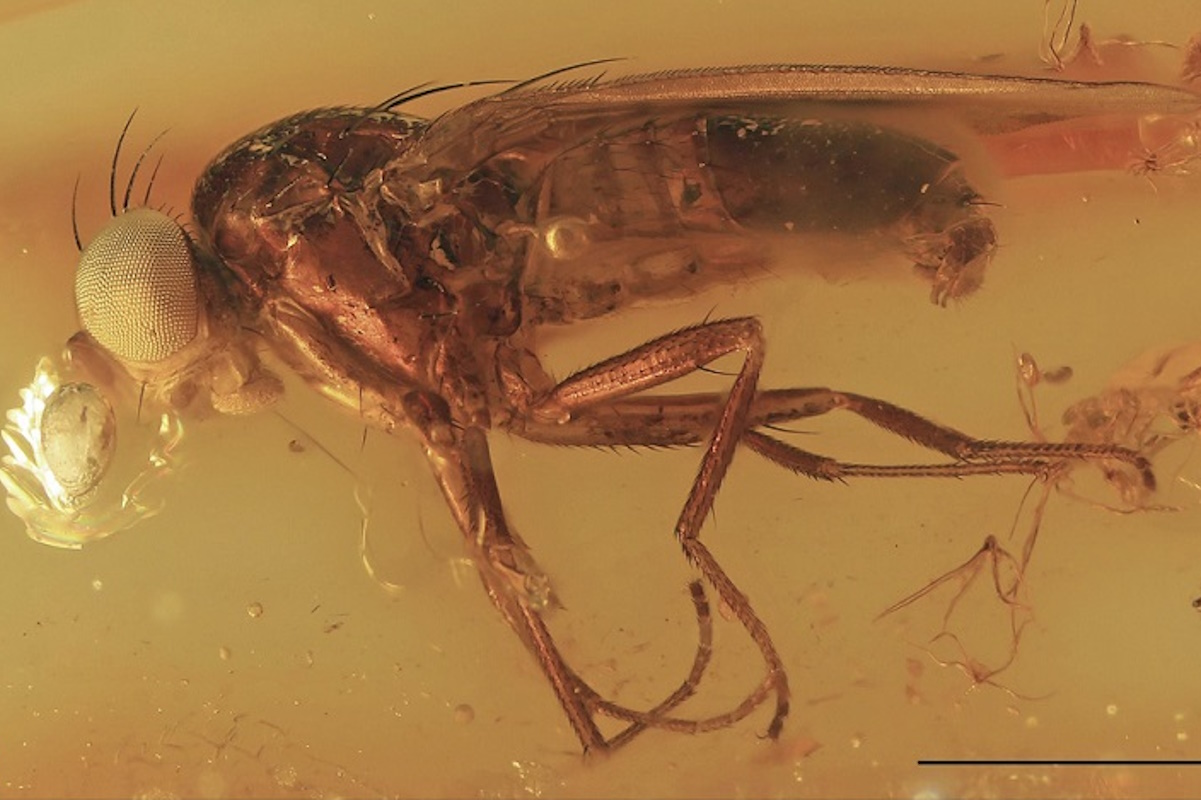Amber from the Hollín formation in Ecuador has preserved ancient organisms. The discovery opens a window into the biodiversity of the supercontinent Gondwana, 112 million years ago

Table of contents
A rare and fascinating discovery comes from Ecuador: insects, plant fragments, and spider webs perfectly preserved in amber dating back 112 million years. The finding, which occurred in the Hollín formation, within the eastern Amazon region of the country, represents a precious piece in reconstructing a tropical ecosystem from the Cretaceous period.
The details were published in the journal Communications Earth & Environment, and they show how much there is still to discover about Earth’s natural history, especially in less explored areas like South America.
Amber, a plant fossil that tells the story of life millions of years ago
Amber is a fossilized resin produced by trees, capable of trapping small organisms and preserving them with incredible precision. Under particular conditions, this resin solidifies and resists over time, becoming a sort of time capsule.
In the case of the amber found in Ecuador, scientists identified specimens of insects belonging to five different orders, including flies, beetles, ants, and wasps. Some insects were so well preserved that they showed behaviors in action, such as feeding on fungi. They also found remains of spider webs, spores, pollen, and plant fragments, elements that together offer a very detailed picture of the environment in which they lived.

This ability of amber to capture even soft-bodied organisms, such as insects and fungi, is fundamental. Normally, these living beings leave no traces in the fossil record, because they decompose rapidly. But when they become trapped in resin, everything freezes: behavior, position, interactions with the environment.
A forgotten corner of Gondwana

©Nature
During the Cretaceous period, about 112 million years ago, the area now occupied by Ecuador was part of Gondwana, a supercontinent that included South America, Africa, India, Australia, and Antarctica. At that moment in Earth’s history, Gondwana was slowly fragmenting and new ecosystems were emerging.
Until now, most discoveries from this period came from the northern hemisphere. But the Ecuadorian amber changes the game: it allows us to study an ecosystem from the southern world, much more humid, tropical, and rich in resinous vegetation, capable of generating large quantities of amber.
Scientists hypothesize that the forest in question was dense and hot, populated by resinous plants and an intricate network of insects, fungi, and other life forms. What is striking is the complexity of the ecosystem, similar in some aspects to that of modern rainforests.
A journey into ancient biodiversity
Amber doesn’t just return the image of a single insect, but a photograph of the entire ecosystem. Thanks to the presence of plant materials and organisms interacting with each other, researchers can understand how species coexisted, what ecological functions they performed, and how they adapted to the climate.
The fact that these fossils come from an unexplored area like the Ecuadorian Amazon makes the discovery even more significant. Often, in fact, data on Cretaceous biodiversity is based on materials from the northern world. But Ecuador could hold key information about how life evolved in the southern hemisphere, and how the fragmentation of Gondwana influenced species distribution.
These fossils also help to better understand the climate and ecological changes of that time, offering comparisons with current environmental dynamics. It’s a concrete example of how studying the past can help interpret the present and future of our planet.
Source: Nature
